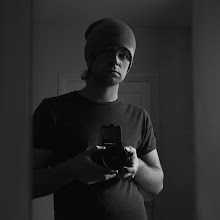I have realized that capturing real people, real objects, and real moments of live is the most inspirational for me. That’s why I was very interested in watching the material Eva gave us on her seminars. I have always been surfing through the works of World known masters of photography Robert Capa, Lee Miller, Philip Jones Griffins, Wiegge, James Nachtwey and so on.
Documentary photography is a very wide genre. If you would ask me what are the borders of it, when a photograph stops being documental. I would answer with a silence. I think image is documental when you feel it to be such. Photo Imagery itself is a document of something that has happened. Looking at the fashion shot you can say that the particular model was staying in a studio and posing on a particular day. For me photograph is documental unless I feel it to be such.
It is a Christmas break starting soon I have got my tickets back home for three weeks and a Bronica SQ-Ai, 80 mm, f 2,8 and 150 mm f 3,5 (lovely portrait glass) lenses with 30 rolls of Ilford and Fuji Color film of a different light sensitivity, ready to make some lovely “documaentika”.
As I have said documentary for me is first of all what you see, what you feel and what you believe in. I have just been home. Everything that I saw, felt and believed in were memories of my past life. Streets of my home town are a canvas my life was drawing on. I have decided to make its portrait. So I woke up early in the morning sun was just rising up and it was expected to be a lovely, sunny, frosty Estonian day. -12 C would cause some problems for electronics of a digital camera but I had a Bronica which was not afraid to be frozen. So here is a story “There is a winter on a block”:
Kohtla-Järve is a city and municipality in north-eastern Estonia, founded in 1924 and incorporated as a town in 1946. The city is highly industrial, and both processes oil shales and is a large producer of various petroleum products. The city is also very diverse ethnically: it contains people of nearly 40 ethnic groups and only 21% of the population are Estonians. Many ethnic Estonians in the city have adopted Russian as their primary language, although this changed in the late 1990s, as Estonian once again became the primary language used in everyday life. Kohtla-Järve is the 4th largest city in Estonia.
















1 comment:
Fantastic blog.
Great pictures.
Please visit:
http://pheromone-world.blogspot.com
Keep blogging.
Good day.
Post a Comment